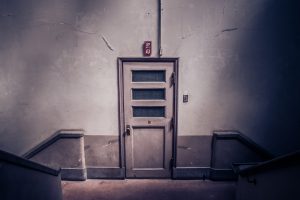As Japan struggles to cope with COVID-19, staying home to curb the spread of the virus has become common sense. However, the psychological effects of self-isolation, which include irritation, depression, and loneliness, have led to an increase in domestic violence cases, while internet usage has gone up as a way to move beyond the physical limitations of one’s home. In times of uncertainty, a navigational tool is always sought after; in Japan, hikikomori, or social recluses, are now regarded as uniquely positioned to offer insight to those struggling with self-isolation. While the term hikikomori was used colloquially prior to the pandemic, juxtaposing an understudied mental health issue with a global crisis is problematic because it risks overshadowing long-term hikikomori in need of help, and can create a false sense of understanding among the majority.
Before COVID-19 was considered a serious problem in Japan, staying home and “social distancing” were seen as undesirable traits to be frowned upon. In Japanese office culture, for example, face-to-face interactions are seen as a way to foster a sense of solidarity among employees; that explains Japan’s slow transition to telework. But now the call to “stay home and save lives” can be heard globally, and the Japanese government has asked its citizens to practice “jishuku” (a form of self-restraint founded on a sense of self-responsibility) regarding nonessential outings. As such, staying home – something a hikikomori is presumably good at – has been framed as exemplary, as a civic virtue, while those who defy such calls have been declared “Covidiots” and shunned as morally inconsiderate people.
Research shows that staying home is an effective method to contain the virus, but it has also made social inequalities much more evident. Experiences in lockdown differ greatly between the wealthy (who are “locking down” in houses with high-speed internet access) and the poor (who are trapped in small apartments with no access to the internet – if they can afford to stay home at all). Similarly, the experiences of long-term hikikomori are vastly different from the majority who are now “hikikomori” only temporarily, as they are anxious to return to a more familiar reality where their movements and social interactions are not so heavily regulated.
Defining “hikikomori” is difficult because it refers to both the phenomenon of severe social withdrawal and the individual who is affected. The Ministry of Health, Labor and Welfare defines a hikikomori as an individual who has self-isolated at home for at least six months and has not interacted with others outside of their immediate family. But psychiatrists Alan R. Teo and Albert C. Gaw note in their study that “The irony of the term hikikomori is that it has achieved such popularity in use and recognition that it may now be unwittingly obfuscating diagnosis.”
Hikikomori are often defined in the public imagination as lazy people who live with their parents and stay in their rooms as a result of a personality disorder. Recent criminal cases such as the stabbing of 17 schoolchildren and the murder of a reclusive 44-year-old son by his father have further stigmatized hikikomori as an “Other” to be feared.
The number of hikikomori in Japan has been disputed, ranging from the government’s estimate of 1.15 million for individuals aged 15-64 to estimates of 2 million by experts such as Tamaki Saito, a leading psychiatrist on the hikikomori issue. The reasons for becoming a hikikomori are also debated, but it is typically considered a culture-bound syndrome associated with Japan’s rigid social structure, where conformity is normalized through peer pressure and shame. Thus, social withdrawal is an involuntary escape from the perceived hostility of the outside world. As 53-year-old Kenji Yamase, himself a hikikomori, told the Japan Times: “[Hikikomori] have been forced into withdrawal. It isn’t that they’re shutting themselves away – it’s more like they’re being forced to shut themselves away.”
Relatively little has been said about how COVID-19 affects the hikikomori population, especially with regard to their reintegration into society. Rather, there seems to be a pervasive assumption that hikikomori are mentally better equipped to cope with the societal changes imposed by the pandemic. Such thinking merely perpetuates the ambiguity surrounding the definition of hikikomori, and it may also generate a complacent attitude among authority figures that designate hikikomori as a lost cause. With hikikomori and their families reluctant to seek help for fear of being judged, the question of how Japanese society can change to address these issues in a post-COVID-19 world is in need of further discussion.
Tadasu Takahashi is a freelance writer and independent researcher. He received his MA in Global Studies from Sophia University, where he also worked as a research and teaching assistant.

































